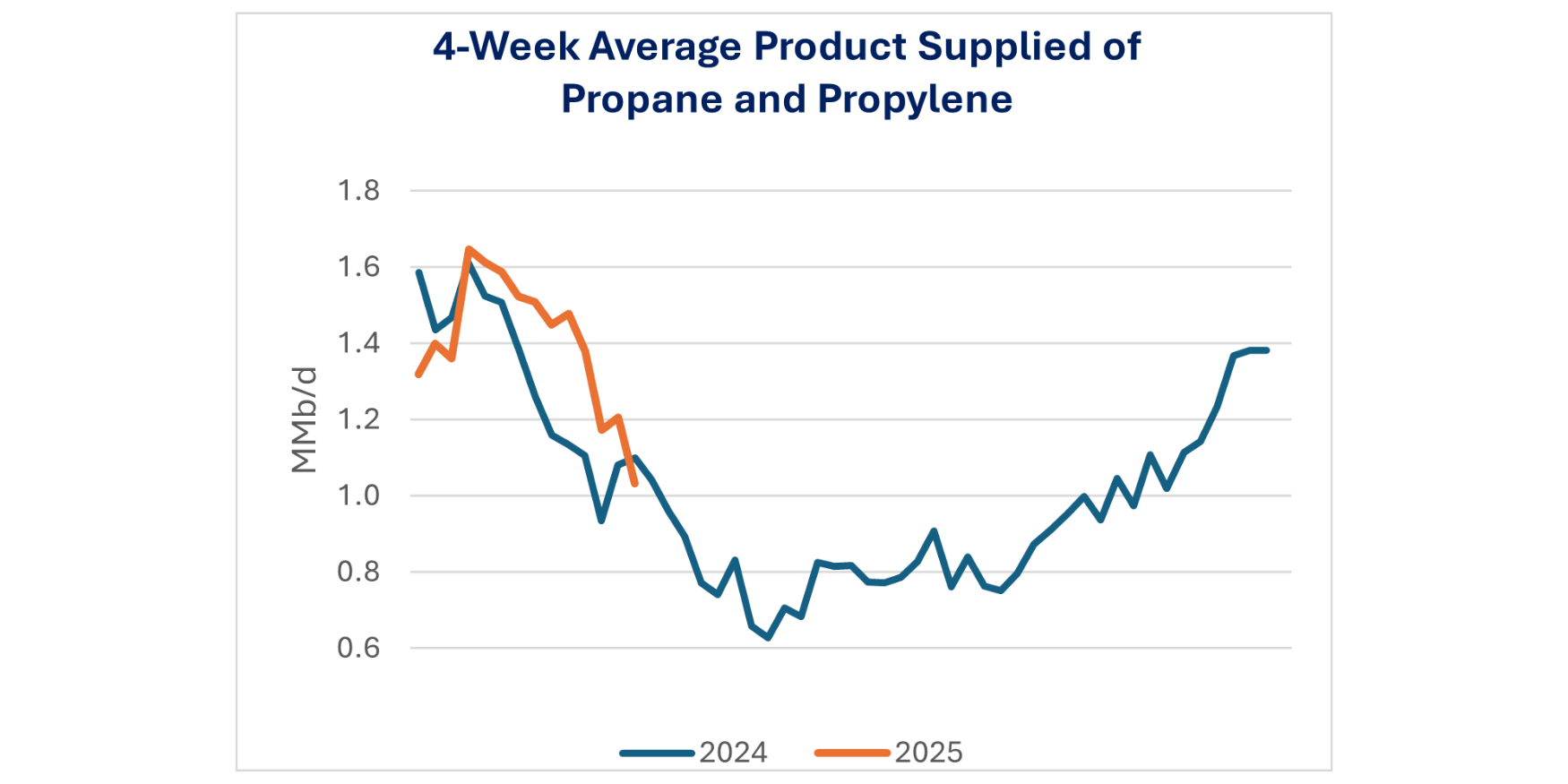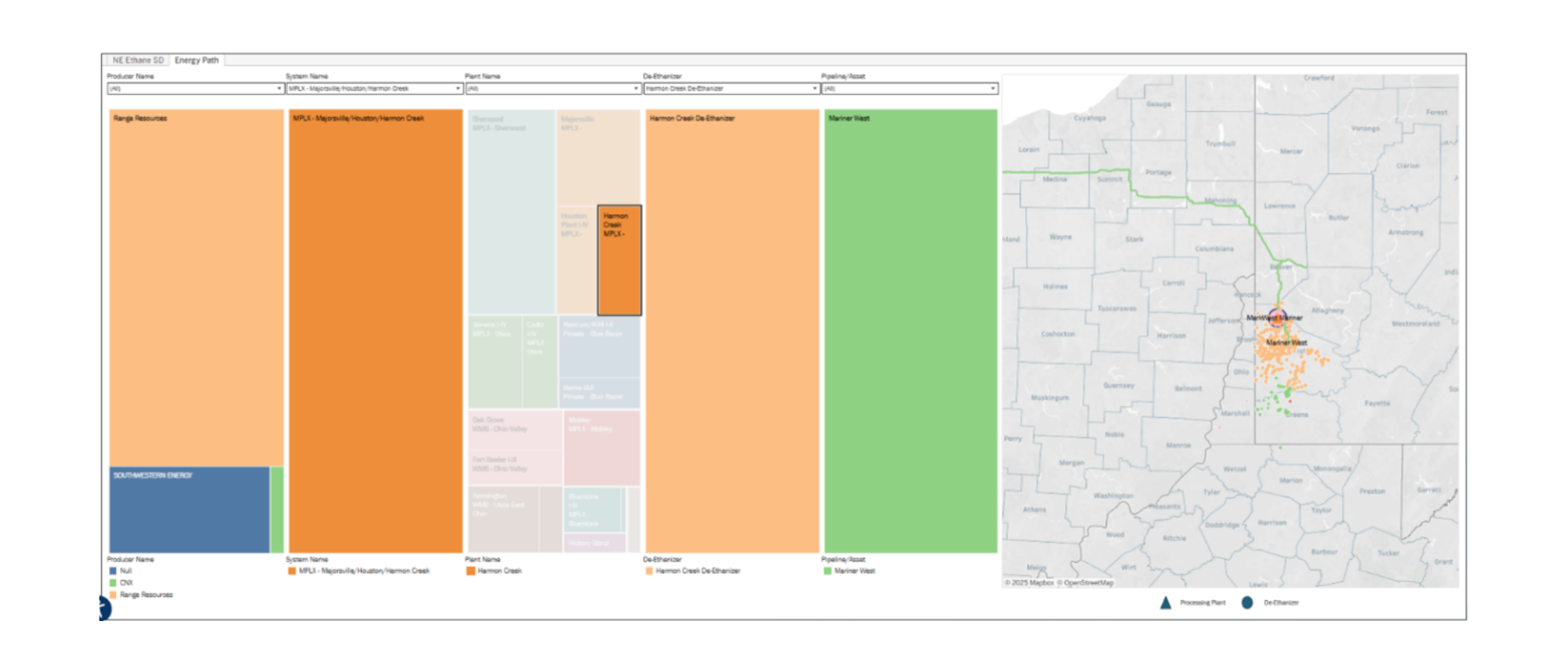Executive Summary: Infrastructure: A change to gasoline refining standards is set to increase US butane production. Rigs: The US rig count increased by 2 during the week of March 30 to 573. Liquids-driven basins increased by 3 W-o-W to 472. Flows: For the week ending April 13, total U.S. pipeline natural gas volumes averaged 70.2 Bcf/d, remaining relatively flat compared to the previous week. Calendar: KMI Earning 4/16 | FERC Form 6 deadline 4/18
Infrastructure:
A new pro-ethanol change to gasoline refining standards is set to increase US butane production at refiners serving the Midwest.
The Rule: In 2024, eight Midwest states received approval from the Environmental Protection Agency (EPA) to opt out of a Reid vapor pressure (RVP) waiver offered to E10 gasoline (fuel blended with 10% ethanol) during the summer ozone season. The change is set to begin April 28, 2025.
Currently the EPA limits access to E15 gasoline (15% ethanol blend) in most of the US during the ozone season (June 1–September 15). Under the Clean Air Act, the EPA provides a less-stringent waiver for E10 fuel specifications vs E15, putting the heavier ethanol blend at a disadvantage.

The Midwest states are large producers of corn and ethanol and seek to end the discrimination against E15. The states are opting out of the waiver that allows E10 a maximum RVP of 10 psi (pounds per square inch), while E15 has a maximum RVP of 9 psi.
RVP measures the volatility of gasoline and petroleum products. A higher RVP means more evaporation and more fumes than from fuels with a lower RVP. By opting out of the waiver, the Midwest states will put E10 and E15 on an equal RVP footing of 9 psi max.
Why it Matters: Butane is removed most of the year during the gasoline refining process in order to lower the RVP of raw motor gasoline and meet fuel specifications. Lowering the permitted RVP for gasoline sold in the Midwest states will encourage more butane recovery. According to the EIA, about 2 gallons of normal butane must be removed from 100 gallons of motor gasoline to reduce the RVP by 1 psi.
The map shows the eight states in PADD 2 where the new regulations will take effect: Illinois, Iowa, Nebraska, Minnesota, Missouri, Ohio, South Dakota and Wisconsin. These states consumed a total of 1.3 MMb/d of motor gasoline in 2023. East Daley estimates 26 Mb/d of additional butane will be recovered by refiners as a result of this regulatory change, or a 3.5% increase in US normal butane supply.
Rigs:
The total US rig count increased by 2 during the week of March 30 to 573. Liquids-driven basins increased by 3 W-o-W to 472.
- Permian (+4):
- Midland (+3): SOGC (+1), DE Central Operating (+2)
- Delaware (+1): Matador Resources
- DJ (+2): Creek Road Miners, Centennial Petroleum
- Anadarko (-2): Wavetech Helium, Inc, Grand Mesa Operating
- Bakken (-1): Silver Hill Energy

Flows:
For the week ending April 13, total U.S. pipeline natural gas volumes averaged 70.2 Bcf/d, remaining relatively flat compared to the previous week.
Liquids-driven basins were also relatively stable, recording a minor week-over-week (W-o-W) increase of 49 MMcf/d, bringing the average to 18.1 Bcf/d. The Permian Basin remained flat W-o-W, averaging 5.87 Bcf/d, similar to the Anadarko Basin, which increased by less than 1%, averaging 4.1 Bcf/d.
Gas-driven basins held steady on a W-o-W basis as well, maintaining an average flow of 44.4 Bcf/d. Within this segment, Haynesville rose by 3%, increasing from 10.5 Bcf/d to 10.7 Bcf/d — a gain of approximately 319 MMcf/d. This increase was offset by a 0.3% decrease in Appalachia, which averaged 32.8 Bcf/d.

Looking ahead, the Appalachia and Haynesville basins will be pivotal to monitor. With U.S. natural gas storage levels now below the 5-year average—due to significant withdrawals in February—increased production from these regions will be critical to restoring balance between supply and demand.
Calendar:







